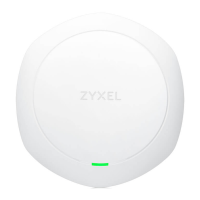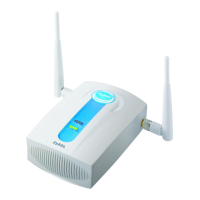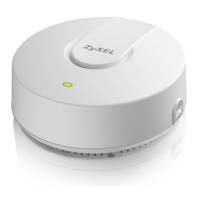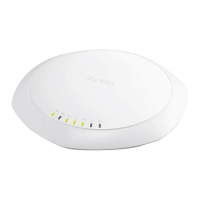Chapter 16 System
NWA50AX User’s Guide
144
transferred data), authentication (one party can identify the other party) and data integrity (you know if
data has been changed).
It relies upon certificates, public keys, and private keys (see
Chapter 15 on page 122 for more
information).
HTTPS on the Zyxel Device is used so that you can securely access the Zyxel Device using the Web
Configurator. The SSL protocol specifies that the HTTPS server (the Zyxel Device) must always
authenticate itself to the HTTPS client (the computer which requests the HTTPS connection with the Zyxel
Device), whereas the HTTPS client only should authenticate itself when the HTTPS server requires it to do
so (select A uthe ntic a te C lie nt C e rtific a te s in the WWW screen). Authe ntic a te C lie nt C e rtific a te s is
optional and if selected means the HTTPS client must send the Zyxel Device a certificate. You must apply
for a certificate for the browser from a CA that is a trusted CA on the Zyxel Device.
Please refer to the following figure.
1 HTTPS connection requests from an SSL-aware web browser go to port 443 (by default) on the Zyxel
Device’s web server.
2 HTTP connection requests from a web browser go to port 80 (by default) on the Zyxel Device’s web
server.
Fig ure 86 HTTP/HTTPS Implementation
Note: If you disable HTTP in the WWW screen, then the Zyxel Device blocks all HTTP connection
attempts.
16.4.4 C o nfig uring WWW Se rvic e C o ntro l
Click Co nfig ura tio n > Syste m > WWW to open the WWW screen. Use this screen to specify HTTP or HTTPS
settings.

